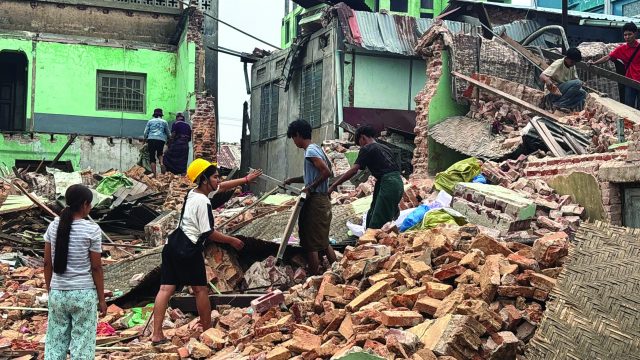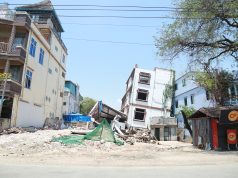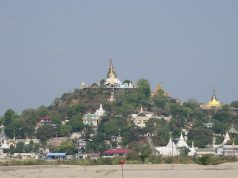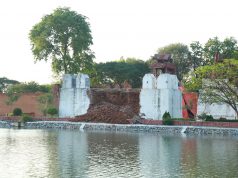After Pyin Manar, we headed up north towards Mandalay via the old highway, getting closer and closer towards the centre of the earthquake. Along the way we passed by five historic towns of note, in existence since the times of the Burmese kingdoms.
Ya Mare Thin
Once you left Nay Pyi Taw and Pyin Manar, you would pass by the dusty township of Tat Kone before the first major town called ‘Yamethin’, pronounced ‘Ya Mare Thin’. Ya Mare Thin was mostly spared from disaster. We only encountered a few damaged buildings and billboards. The casualties were very few.
Pyaw Bware
The damage was much more in Pyawbwe (Pronounced ‘Pyaw Bware’), the most famous of the collapsed being the KBZ bank, where close to 40 people died after the bank branch caved in. There were rumours of the bank closing off its doors to prevent looting during the first round of the quake, trapping the customers and staff within, before the whole building fall upon them during the second round a minute later.
In addition to that, the town centre was adversely affected with many of the large buildings bearing the brunt of the ground force. The clean up was underway when we passed by, as the city trying to get its own feet. Pyaw Bware is the junction before heading to the Shan State towards Kalaw, Inn Lay, Taung Gyi, etc., hence it is always bustling with traffic and businesses want to get back up and running soonest possible.
One Twin
After Pyaw Bware, we drove further north to reach the town of Wundwin (Pronounced ‘One Twin’). It became more and more obvious by then where the quake originated. The damage got worse and worse as we headed up (north).
The buildings left and right of the main street were all in some state of disarray, some tilted, some totally collapsed, some partially. We went though these towns during the water festival and the youngsters especially were in full spirit of Thingyan, seemingly oblivious of what had just happened two weeks ago. The banks of the canal going through the town were also extensively damaged as our film crew covered the area.
Ku Mare
In Kume (Pronounced ‘Ku Mare’) the damage was slightly worse than One Twin. We started to observe the more sizeable impact on the religious infrastructure, such as the whole pagoda compound becoming totally off limit due to the fallen debris everywhere.
Kyauk Se
Kyauk Se was in fact a city, much larger in size than the four prior. In fact, along the old road from Nay Pyi Taw, it is the second largest city after Meik Tilar, which we did not pass through. We saw damage on almost every single high street banks. Unsurprisingly, it was the worst hit of the five as it was closest to the epicentre.
We had our lunch there, but we did not notice any shortages of supplies or menu items on the restaurant. Despite huge losses, the businesses and people are back to work within two weeks.










